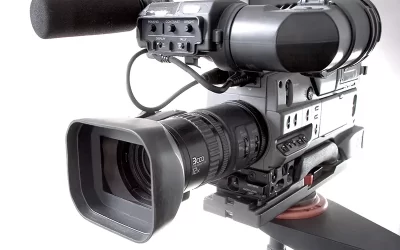When it comes to transcribing a conference call, a webinar, a podcast, or any other type of digital audio recording, there are many things that go to improving quality. Besides language and typing skill, speed, and knowing how to use online research tools, transcriptionists need to use quality transcription software. One thing that all digital transcription service providers would agree on to add value to transcripts is time stamping.
The Wikipedia definition of a timestamp is as follows: “A timestamp is a sequence of characters, denoting the date and/or time at which a certain event occurred. A timestamp is the time at which an event is recorded by a computer, not the time of the event itself. In many cases, the difference may be inconsequential: the time at which an event is recorded by a timestamp (e.g., entered into a log file) should be very, very close to the time of the occurrence of the event recorded.”
In transcription, time stamping involves inserting markers to show the time into the transcript to show where the text is found in a video or audio file. In other words, the transcript’s text is aligned to the recording by inserting time stamps at consistent intervals. Placing timestamps allows users to review or listen to a particular part or conversation in the audio or video file. Based on the client’s requirements, time stamps are inserted at consistent intervals in the [00:00:00] or HH:MM:SS format, where HH, MM, and SS stand for hours, minutes, and seconds from the start of the audio or video file.
Video-to-text transcriptions that include timestamps allow you to quickly identify the content you want to listen to without having to view or listen to the entire video/audio file. This makes time stamps very useful for panel discussions, legal transcripts, market research interviews, focus groups, oral history, podcasts, and virtual meetings or video conferences.
Companies that provide video and audio transcription services offer different options such as periodic timestamps, paragraph timestamps, sentence timestamps, and speaker timestamps.
- Periodic Timestamps: Clients may want time stamps placed at specific time intervals such as every 30 seconds, 1 minute, 5 minutes, 30 minutes, etc. Periodic timestamps are considered ideal for raw video footage and in situations where timestamps do not appear too frequently (e.g. every minute or two).
- Paragraph Timestamps: These are placed at the start or end of each paragraph. Though less frequent and less conspicuous than other types, paragraph timestamps allow readers to identify the general section of the audio consistent with a particular part of the transcript.
- Sentence Timestamps: These timestamps are placed at the beginning of each sentence. Though distracting to the reader, they are useful when the client requires a detailed marker.
- Speaker Timestamps: This is a commonly requested timestamp for depositions, interviews, panel discussions, and conversational text. It involves inserting timestamps when the speaker changes. Speaker timestamps appear. at the beginning of a dialogue and make it easy to find specific questions or answers.
- Inaudible Timestamps: These are used when the audio cannot be understood or lacks clarity. Rather than entering what was heard, the word ‘inaudible’ is typed in along with the timestamp.
Timestamps A Useful Tool in Legal Transcripts
According to Omega Reporting, timestamps can be an important tool for paralegals, attorneys, and trial prep teams in two ways:
- Timestamping the transcript will enable the litigation team to find blocks of testimony in the text and create clips for settlement or trial purposes.
- If the deponent is taking too much time to answer questions, transcript timestamping can help the lawyer view the time elapsed between the questions and responses
Timestamps and speaker identification also help lawyers keep track of the flow of information and the timeline of events. This can be crucial to create a case or to detect discrepancies in testimonies. Timestamps are also useful in legal dispositions when the lawyer needs to refer to a specific part of a transcription.
Experienced providers of digital transcription services can ensure accurate transcribed content of audio and video recordings with timestamps as per client requirements.




